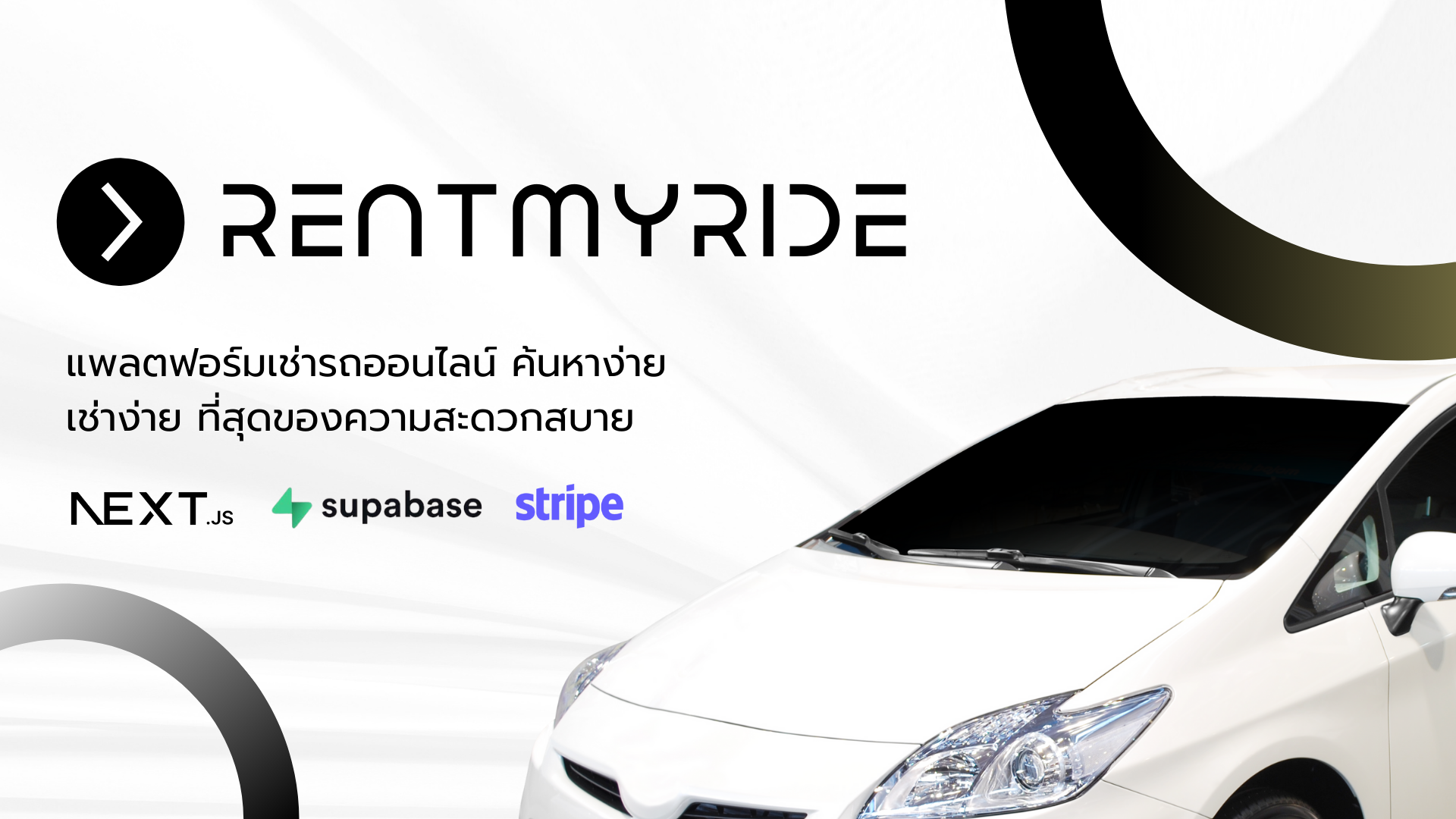Rent-My-Ride Project Directory
Project Directory ทั้งหมดควรหน้าตาเป็นแบบนี้
Rent-My-Ride Project Directories
├── README.md
├── package.json
├── next.config.ts
├── tsconfig.json
├── tailwind.config.ts
├── postcss.config.mjs
├── eslint.config.mjs
├── components.json
├── next-env.d.ts
├── middleware.ts
├── app/
│ ├── layout.tsx
│ ├── page.tsx
│ ├── globals.css
│ ├── favicon.ico
│ ├── opengraph-image.png
│ ├── twitter-image.png
│ ├── auth/
│ │ ├── login/
│ │ │ └── page.tsx
│ │ ├── sign-up/
│ │ │ └── page.tsx
│ │ ├── sign-up-success/
│ │ │ └── page.tsx
│ │ ├── forgot-password/
│ │ │ └── page.tsx
│ │ ├── update-password/
│ │ │ └── page.tsx
│ │ ├── confirm/
│ │ │ └── route.ts
│ │ └── error/
│ │ └── page.tsx
│ ├── dashboard/
│ │ ├── page.tsx
│ │ ├── admin/
│ │ │ └── page.tsx
│ │ ├── cars/
│ │ │ ├── page.tsx
│ │ │ ├── add/
│ │ │ │ └── page.tsx
│ │ │ └── [id]/
│ │ │ ├── page.tsx
│ │ │ └── edit/
│ │ │ └── page.tsx
│ │ ├── bookings/
│ │ │ └── page.tsx
│ │ └── profile/
│ │ └── page.tsx
│ ├── browse/
│ │ └── page.tsx
│ ├── cars/
│ │ └── [id]/
│ │ └── page.tsx
│ ├── checkout/
│ │ └── page.tsx
│ ├── success/
│ │ └── page.tsx
│ └── api/
│ ├── cars/
│ │ ├── route.ts
│ │ └── [id]/
│ │ └── route.ts
│ ├── bookings/
│ │ └── route.ts
│ └── admin/
│ └── approve/
│ └── route.ts
├── components/
│ ├── auth-button.tsx
│ ├── car-card.tsx
│ ├── env-var-warning.tsx
│ ├── footer.tsx
│ ├── header.tsx
│ ├── hero.tsx
│ ├── login-form.tsx
│ ├── logout-button.tsx
│ ├── sign-up-form.tsx
│ ├── forgot-password-form.tsx
│ ├── update-password-form.tsx
│ ├── car-form.tsx
│ ├── car-list.tsx
│ ├── booking-card.tsx
│ ├── profile-form.tsx
│ ├── admin-car-approval.tsx
│ ├── payment-form.tsx
│ └── ui/
│ ├── badge.tsx
│ ├── button.tsx
│ ├── card.tsx
│ ├── checkbox.tsx
│ ├── dropdown-menu.tsx
│ ├── input.tsx
│ ├── label.tsx
│ ├── select.tsx
│ ├── textarea.tsx
│ └── toast.tsx
├── lib/
│ ├── utils.ts
│ ├── auth.ts
│ ├── types.ts
│ └── supabase/
│ ├── client.ts
│ ├── server.ts
│ └── middleware.ts
├── public/
│ ├── logo/
│ │ └── logo.png
│ └── images/
│ └── placeholder-car.jpg
└── node_modules/ส่วน Flow ของ Web-Application ควรเป็นแบบนี้นะ
ปล. ตอนนี้ของเรามีประมาณนี้ ตอนแรกว่าจะมีระบบ approve user ด้วย แต่ว่าเหนื่อยไป ค่อยเพิ่มได้ ไม่เป็นไร
graph TD
subgraph "Guest Flow (ผู้ใช้ทั่วไปที่ยังไม่ Login)"
A["Homepage /"] --> B["Browse Cars /browse"];
A --> C["Login /auth/login"];
A --> D["Sign Up /auth/sign-up"];
B --> E{"Car Detail /cars/[id]"};
E -- กดจองรถ --> C;
end
subgraph "Authentication Flow (ขั้นตอนการยืนยันตัวตน)"
C -- ลืมรหัสผ่าน --> F["Forgot Password /auth/forgot-password"];
F -- ส่งฟอร์ม --> G["Email Sent..."];
G -- คลิกลิงก์ในอีเมล --> H["Update Password /auth/update-password"];
H -- อัปเดตรหัสผ่านสำเร็จ --> C;
D -- กรอกข้อมูลสมัคร --> I["Sign Up Success /auth/sign-up-success"];
I -- ยืนยันตัวตนสำเร็จ --> C;
C -- Login สำเร็จ --> J["User Dashboard /dashboard"];
end
subgraph "Logged-in User Flow (ผู้ใช้ที่ Login แล้ว)"
J --> B;
J --> K["My Profile /dashboard/profile"];
J --> L["My Bookings /dashboard/bookings"];
J --> M["My Cars /dashboard/cars"];
M --> N["Add New Car /dashboard/cars/add"];
M --> O{"View My Car /dashboard/cars/[id]"};
O --> P["Edit My Car /dashboard/cars/[id]/edit"];
E -- กดจองรถ (Login แล้ว) --> Q["Checkout /checkout"];
Q -- ชำระเงินสำเร็จ --> R["Success Page /success"];
R --> J;
end
subgraph "Admin Flow (ผู้ใช้ที่เป็น Admin)"
J -- เป็น Admin --> S["Admin Dashboard /dashboard/admin"];
S -- จัดการรถ --> M;
S -- ดูรถที่รออนุมัติ --> T["Approve Cars UI"];
endส่วนนี้จะเป็น flow ของพวก API use-state, use-effect ต่าง ๆ
ทำมาให้ดู เพื่อให้เห็นภาพมากยิ่งขึ้นคับ
sequenceDiagram
participant Client as Client (Next.js Component)
participant Server as Next.js Server (API Route / Server Component)
participant DB as Supabase (DB & Auth)
%% Case 1: Fetching Public Data (Server Component)
Note over Client, DB: Case 1: การดึงข้อมูล Public (เช่น หน้า /browse)
Client->>Server: 1. ผู้ใช้เรียกหน้าเว็บ /browse
Server->>DB: 2. Server Component เรียกใช้ Supabase Client (ฝั่ง Server)<br>await supabase.from('cars').select('*')
DB-->>Server: 3. Supabase ส่งข้อมูลรถทั้งหมดกลับมา
Server-->>Client: 4. Next.js Server สร้างหน้าเว็บ (SSR) ที่มีข้อมูลรถแล้วส่งเป็น HTML ให้ Client
%% Case 2: Creating/Updating Authenticated Data (Client Component + API Route)
Note over Client, DB: Case 2: การสร้างข้อมูลใหม่ (เช่น การเพิ่มรถในหน้า /dashboard/cars/add)
Client->>Client: 5. ผู้ใช้กรอกฟอร์มในหน้าเว็บ
Client->>Server: 6. ส่ง Request (POST) ไปที่ /api/cars <br>พร้อมข้อมูลจากฟอร์มและ Auth Token (JWT)
Server->>DB: 7. API Route ตรวจสอบสิทธิ์ผู้ใช้จาก Token กับ Supabase Auth
DB-->>Server: 8. ยืนยันว่าผู้ใช้มีสิทธิ์
Server->>DB: 9. สั่งเพิ่มข้อมูลรถลง Database<br>supabase.from('cars').insert({...})
DB-->>Server: 10. ยืนยันการเพิ่มข้อมูลสำเร็จ
Server-->>Client: 11. ส่ง Response กลับไปว่าสำเร็จ { success: true }
%% Case 3: Authentication Flow (Client-side)
Note over Client, DB: Case 3: การยืนยันตัวตน (เช่น Login)
Client->>Client: 12. ผู้ใช้กรอกอีเมล/รหัสผ่าน
Client->>DB: 13. เรียกใช้ supabase.auth.signInWithPassword() โดยตรง<br>Supabase Client (JS) จะส่ง Request ไปยัง Supabase Auth
DB-->>Client: 14. Supabase Auth ตรวจสอบข้อมูลและส่ง Session กลับมา<br>พร้อมตั้ง Cookie ให้โดยอัตโนมัติ
Client->>Server: 15. การเรียกหน้าเว็บครั้งถัดไป (เช่น /dashboard) จะมี Cookie ติดไปด้วย
Server->>Server: 16. Middleware หรือ Server Component <br>อ่านค่า Cookie เพื่อตรวจสอบ Session ก่อนแสดงผลหน้า